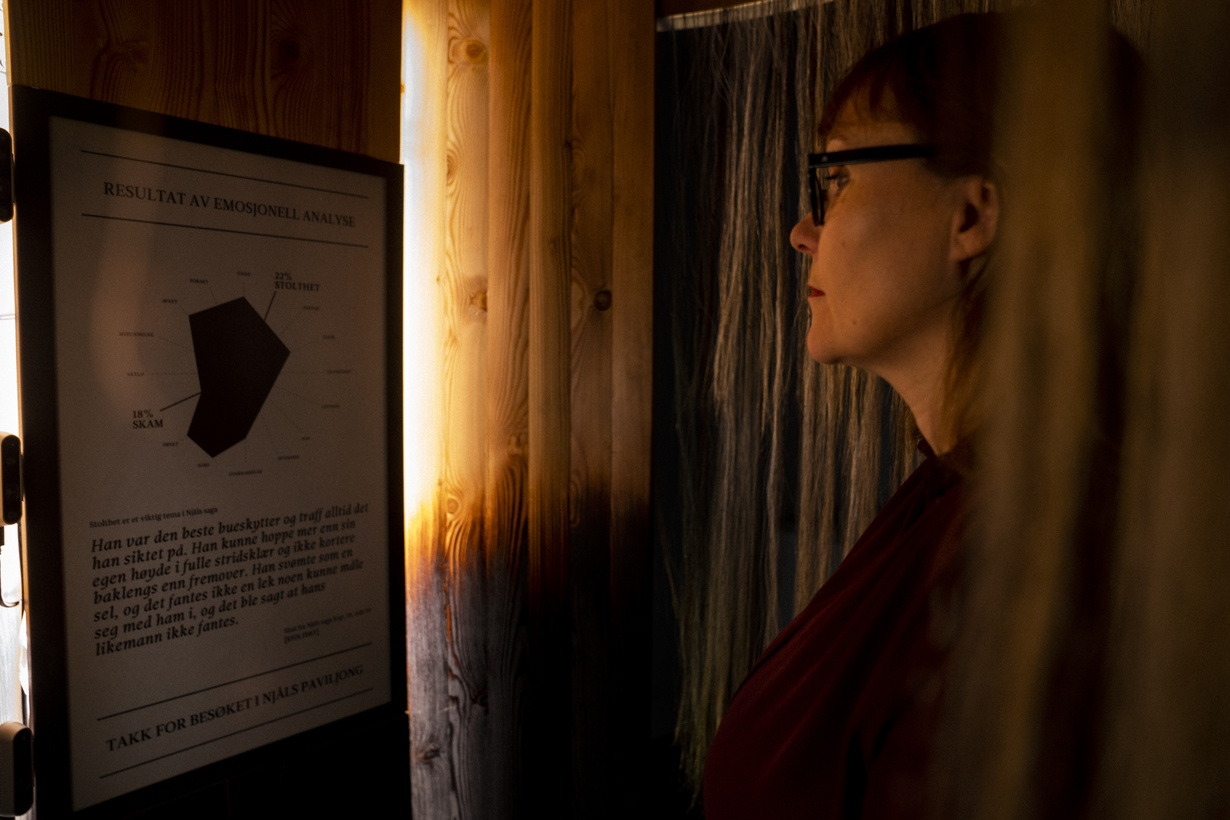Njála
Scandinavia
In a space enclosed with horsehair, a person will encounter his own emotions connected to the themes in Njals Saga through face scanning and feedback of the analysis. At the same time, others can see the result in an abstract way.
The focus in this installation is a sort of staging of the discrepancies between one’s view of oneself and the view of the public. Therefore the installation will function in such a way that when a visitor immerses himself in it, it will signal its use to the public and thereby drawing attention to itself and the visitor within it. Not knowing what it was that drew people's attention whilst inside the exhibit he will, therefore, be kept wondering about what drew people's attention, highlighting this discrepancy between the private and public sphere in a literal sense.

A critical look at algorithmic bio-power and surveillance as well as the new technological vectors through which ancient social concepts such as shame and pride are operationalized and turned into data that could in turn be controlling us in the faraway servers rooms where the cloud-based computational layers of society hum along.

The installation uses a couple of new and emerging technologies to connect the visitors to the saga of Njál however trying to retain a connection to the materiality present in the book as well in the materiality of a book. The former is evident in the materials used, wood iron and Icelandic horsehair; the latter in the form of an e-paper screen that has a pace and an aesthetic that is more similar to a book experience than that of a regular computer screen

The experience that the visitor is exposed to is one collected from a few vignettes from the saga, the emotional response to those are recorded through an emotional tracking of the people's response along an axis of shame and pride. The operationalization of shame and Pride is thus interpolated from the geneva wheel of emotion which is represented in two dimensions rather than the plutchik one which is intended for three dimensions and therefore evades interpolations between the emotions given within the computational framework.

The dramaturgical end of the experience is determined by these emotional responses and tailored individually as well as textually to that emotion which hopefully creates a bridge over time between the present as well as the past in which the saga takes place.
